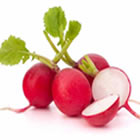All Natural Food Color Ingredients - Nothing Synthetic!
Ultimate Baker prides itself in the quality of our Ultimate Food Color system and the basis of this is our focus on using the freshest natural fruit and vegetables in all our food colors. Once we have manufactured the food color we then blend that with the finest sugars, flours and other items to create a huge range of healthy, kosher certified products.
Please see our ingredients list below or contact us for more details (Click here for a detailed list of FDA Approved colorants).
| Ingredients | Image | Description | Colors |
Annatto |
 |
Annatto is one of the more well-known food colors derived from the seeds of the achiote tree. Used for centuries for its health benefits and as a rich food source, Annatto was widely used in South American cultures for its peppery taste and rich color. The color within Annatto comes from carotenoids and is widely used as a colorant in many industries.
|
Yellow-Red |
Spirulina |
 |
A blue-green algae (cyanobacteria) which is super high in nutrients. In its dry form it contains only 5% water and 24% carbohydrates and 100g of powder typically contains 207% of daily value of thiamin and 306% riboflavin (B-vitamins). Historically spirulina was first used by the Aztecs and Mesoamericans as a food source. While spirulina makes an excellent all natural food color, it is also used in humans as a dietary supplement, antioxidant, anti-inflammatory or as a broader food ingredient. |
Blue -Green |
Tumeric |
 |
A member of the ginger family, turmeric is a yellow-orange rhizomatous herbaceous flowering plant typically found and cultivated in India and the sub-continent. Tumeric has a long history in medicine, notably Eastern medicines, but more often is found in foods due to its mustard taste or as a spice in its own right.
|
Yellow-Orange |
Red Radish |
 |
Red radish has a long history as a food source and ingredients since the middle ages. This edible root vegetable of the Brassicaceae family is seen the world over in salads and other recipes. Radish crops are well known for their swollen tap roots with the root color varying from pink, red to purple with a white core. They are fast growing and have high nutritional content with 100g providing 18% daily value of Vitamin C. |
Red |
Grape |
 |
Grapes are well known and broadly consumed berry from the genus Vitis plant. Grapes have been used for centuries are a food source or rich ingredient in wines, jams, jellies, salads and many other recipes. Over 71% of the world production of grapes go into the wine industry. Particular to purple grapes are the water-soluble pigments called anthocyanins which give the grapes their rich vibrant red to purple color. Similar pigments are also found in a range of berries such as blackberries. |
Purple-Black |
Carnauba Wax |
 |
While not a food coloring in its own right, carnauba wax is often used in the food industry to add sparkle but also to act as an emollient (softening agent). Carnauba wax is naturally cultivated from the wax of the leaves from the palm Copernicia Prunifera grown in Brazil. Interestingly, carnauba wax is one of the hardest known waxes, has a boiling point of 82-86%, and largely insoluble in water. |
Various |
